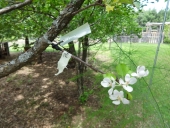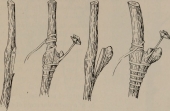Scott Stowers wrote:I have similar questions as this will be my first year grafting. I'm following this topic and also wonder if anybody has used a lower priced grafting tool with much success? I received one as a gift. I have invested in some good rootstock and don't want to waste time/$$ on something that's doomed to fail.
Hi Scott, I bought one of those and it seemed to work well in cutting a very clean sort of tongue and groove in smaller branches, but I didn't have any better success with those as opposed to my grafts that were made with a knife. I'm new at grafting and have almost no skill. My success rate was about 20 percent. Following the advice in this post would probably get you better results. You might have more luck posting this question as a new topic - you'd probably get more views from people who have advice on these tools while keeping the post flowing. Good luck!. Regards, Tim







